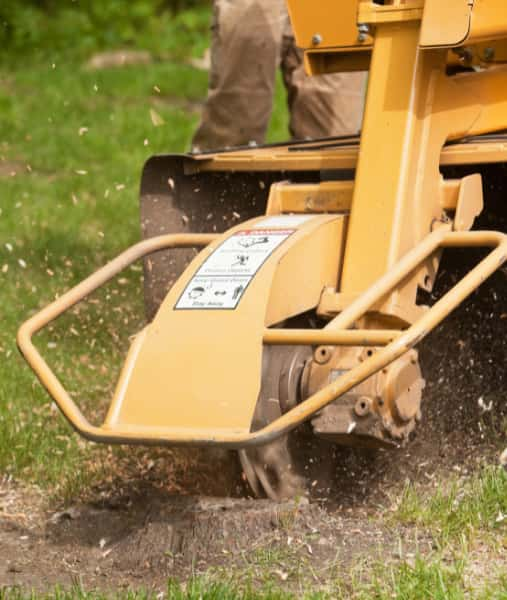Trees add beauty, shade and natural character to properties across Portsmouth, Hampshire. However, even the healthiest-looking trees can hide structural weaknesses or early signs of decline. Without professional attention, these issues can develop into sudden emergencies—such as falling branches, uprooted trees or damage to nearby structures.
This is why proactive tree surgery is essential. At LM Tree Surgery Portsmouth, we specialise in identifying risks early, helping homeowners maintain safe and healthy trees before problems escalate.
Why Early Risk Identification Matters
Tree failures rarely happen without warning. Most hazardous trees display subtle signs long before they become dangerous. Professional tree surgeons are trained to recognise these early indicators and take action to prevent emergencies.
Early intervention can:
- Protect people, property and nearby structures
- Avoid costly damage caused by falling limbs
- Prevent complete tree failure
- Maintain tree health for the long term
- Reduce the need for large corrective work later
In a coastal city like Portsmouth—where strong winds and unpredictable weather are common—timely assessments are especially important.
Key Risks Tree Surgeons Identify Before They Escalate
1. Structural Weaknesses in Branches and Trunks
Cracks, splits or weak branch unions are often invisible to the untrained eye. These structural issues weaken the tree and can cause large branches to fall, especially during storms.
Professional tree surgeons look for:
- Tight V-shaped unions
- Branches growing in competing directions
- Swelling or deformities in the trunk
- Stress fractures from previous storms
Identifying these weaknesses early allows for corrective pruning or branch removal before they fail.
2. Internal Decay and Hidden Rot
Rotting wood inside the trunk or major limbs is one of the most dangerous hidden defects in a tree. By the time visible signs appear, the internal decay may be extensive.
Early indicators include:
- Fungal growth around the base
- Hollow sounds when tapped
- Crumbling bark or soft wood
- Sunken areas on the trunk
Tree surgeons use specialist techniques and visual clues to identify internal decay before it becomes hazardous.
3. Root Problems Affecting Stability
Tree roots anchor the entire structure, and when they become damaged or restricted, the whole tree is at risk of falling. Portsmouth’s coastal soils, combined with compacted ground in urban areas, can make root issues more common.
Professionals assess for:
- Soil heave or lifting
- Exposed or damaged roots
- Leaning trunks
- Restricted rooting areas
- Signs of root rot
Early detection helps determine whether the tree requires support, pruning or removal.
4. Disease and Pest Activity
Many tree diseases spread gradually, weakening the structure long before symptoms are obvious. Likewise, pests can hollow out timber or disrupt nutrient flow.
Common signs monitored include:
- Discoloured foliage
- Premature leaf drop
- Bark lesions
- Fungal brackets
- Insect bore holes
Identifying and treating diseases early prevents widespread decline and reduces the risk of emergency failure.
5. Overextended or Imbalanced Canopies
When a tree develops uneven growth, the weight distribution becomes unstable. Overextended limbs can crack under pressure, while dense canopies catch more wind—both of which increase the likelihood of failure.
Professional tree surgeons address this through:
- Crown thinning
- Weight reduction pruning
- Shaping and balancing the canopy
This makes the tree safer and more resilient during high winds, which are common along the South Coast.
How Tree Surgery Prevents Emergencies
Tree surgery is both preventative and corrective. Skilled work can significantly reduce long-term risks by:
- Strengthening weak structures
- Removing hazardous limbs
- Managing growth through professional pruning
- Treating or managing disease
- Improving wind-flow through the canopy
- Supporting the tree’s natural resilience
This proactive approach helps homeowners maintain safe outdoor spaces while preserving the beauty of their trees.
Why Regular Inspections Are Essential in Portsmouth
Portsmouth’s coastal climate exposes trees to:
- Salt-laden winds
- Intense gusts during storms
- Occasional flooding
- Dense clay soils in localised areas
These conditions can accelerate decay, weaken structures and create unexpected hazards. Regular inspections from LM Tree Surgery Portsmouth ensure these risks are detected early and addressed promptly.
Conclusion
Tree surgery plays a crucial role in preventing emergencies by identifying early signs of weakness, disease and structural instability. Through expert inspection and timely intervention, homeowners can protect their property, enhance tree health and avoid sudden failures.
If you are concerned about the condition of your trees or want to schedule a professional assessment, LM Tree Surgery Portsmouth is here to help. Contact our team today to ensure your trees remain safe, healthy and resilient all year round.
Call us on: 023 8235 3287
Click here to find out more about LM Tree Surgery Portsmouth
Click here to complete our contact form and see how we can help with your trees needs.

